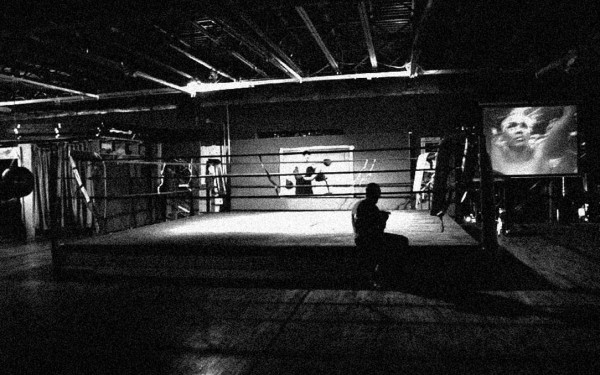Dolls need doctors too
Inside Canada’s active doll community and their unique care practices
Albert had been a cherished figure in Gleneagles Ch’axáý Elementary School in West Vancouver, B.C.
He was always there to greet the children with his gentle presence for 10 years.
After years of love and play, Albert started displaying signs of wear and tear. As the summer of 2023 approached, a fellow staff member suggested a hospital visit—one that would have him refreshed and ready to welcome students for another school year.
Naturally, Albert couldn’t just go to any hospital. The Vancouver General Hospital wouldn’t do—he needed a place that could accommodate a patient of his kind. After all, not many hospitals are equipped to care for a 2.6-metre stuffed giraffe.
So Albert made his way to Ruth Hasman, the teddy bear doctor at Bearland Teddy Bear & Stuffy Hospital in Vancouver, B.C, where he would receive the special care needed to restore him.
The stuffed giraffe returned to his classroom in October. When Albert arrived after weeks away from his precious students, he was met with resounding joy and a welcome-back party. This is what Hasman loves most about her job.
“I didn’t really make any money on that,” she said. “I was paid for the supplies, but it’s just about the challenge and the joy of doing it and experimenting.” While Albert’s visit might seem unique, he’s far from the only stuffed companion to get a second chance.
The oldest known doll hospital, Hospital de Bonecas, resides in Lisbon, Portugal, and has been repairing dolls since 1830. Over the last 200 years, many other doll restoration hospitals opened across the globe, from Japan to Canada, allowing both adults and children a chance to repair their well-loved friends.
There are many reasons why someone would send their doll to a toy hospital to be repaired. The most common restorations stem from dog attacks, fires, old age or simply being well-hugged over the years.
Hasman and her daughter, Janet Domenack, find restorations especially meaningful when toys are being repaired to be passed down to the next generation, allowing children to cherish the same toys their parents once did.
While repairing a toy might seem simple, being a toy surgeon is far more complex. Restoring a doll or stuffed animal requires carefully matching the fabric or plastic, selecting the right type of stuffing, ensuring the thread’s colour and thickness blend seamlessly, and preserving or repairing any previous restorations made to the companion.
Domenack explains how some restorations are more about trial and error, especially when it comes to dolls.
Her most challenging restoration was for an elderly woman with a doll from the ‘60s dressed in a school uniform. She spent hours trying to fix the doll’s body without damaging the material it was made of.
“As soon as you put acrylic paint [on the doll’s body] it would fracture,” Domenack says, “decompose and then break.”
The fragility of these dolls reflects the emotional process of sending them in for restoration. According to a study in The Journal of Positive Psychology, adults often struggle parting with their toys, as they hold deep sentimental value. Using teddy bears as their focus, the researchers found that toys can provide comfort to people of all ages and genders, despite being commonly associated with a younger, more feminine demographic.
Dominique Dansereau, toy surgeon at Montreal toy store raplapla, says that the emotional bond that adults have with their toys can sometimes make the temporary separation even more difficult than it is for children.

“Sometimes the changes [made] are more drastic in the adult’s eyes; they feel more traumatized by it,” Dansereau says, explaining how toy surgeries will likely never have a beloved friend looking brand new, which can be difficult for longtime owners to accept.
For older toys, the surgery can mark the end of their active role in their friend’s life.
“Sometimes you need to retire the toy,” Dansereau adds. “I can repair it, but it needs to stay on the shelf and you can't sleep with it anymore, and that's a harder pill to swallow.”
According to the U.S. National Teddy Bear Day Survey, conducted by Build A Bear Workshop in 2017, 56 per cent of adult Americans have kept their favourite stuffed animals for over two decades. Meanwhile, 70 per cent of them said they planned on keeping them forever.
Dansereau was initially surprised by the demographic of their clientele.
“We found out very quickly that a lot of adults still have their toys,” Dansereau says. She provided a rough estimate of 30 per cent being children and 70 per cent being adults from ages 20 to 70 years old.
The emotional difficulty of being separated from a beloved toy is one reason people turn to online forums and communities for guidance.
On Reddit, the subreddits r/plushies and r/dolls have amassed over 163,000 members combined. Users often seek advice on finding and repairing dolls or simply share their collections. The Dollect website was specifically created for the doll community. With over 200 doll lines catalogued, members can keep track of their collection and interact with others in the community.
Angel Ashurst, a doll collector, explains that being involved in the doll community with a wide age range of members encourages them to share their journey of doll collecting.
“Honestly, a lot of them are older than me,” Ashurst says. “It's just a nice community to be in and it's very accepting.”
Hasman notes that sometimes older clients, especially men, are more embarrassed about asking to get their childhood, or other beloved, stuffed animals fixed. However, she has many male clients, young and old, eager to extend the lives of their beloved friends.
Hasman recounts the story of an older man who requested to get his collection of Muppets, gifted to him by his late wife, to be restored. His wife had made him promise never to look up how expensive they were, and even on her deathbed, he kept his promise. He had long since retired from being a puppeteer, but the puppets served a purpose beyond his profession; they were a lasting memory of the most important person in his life.
One of Ashurst's favourite dolls is the Generation 3 Frankie Stein from Monster High. The doll wears a mesh top paired with purple, pink, blue and green fringe pants that match their makeup and flower crown. Frankie Stein is non-binary, which comforts Ashurst about their own identity and inspires them deeply.
“Frankie’s androgynous but they still present very feminine a lot of the time, and that really makes me happy, because I am pretty feminine,” Ashurst says. “They make me more confident in myself, knowing that I can be respected if I want to dress like that.”
Collecting dolls has also been a way for Ashurst to connect with the dolls they’d left behind after moving from Maryland to California in Grade 6.
“Collecting them now, it’s like restoring my inner child and making ‘little me’ happy again because I wouldn’t have let them go,” Ashurst says.
For many, repairing a doll or stuffed animal allows them to preserve this emotional bond for a lifetime.
Back at raplapla, Dansereau receives Biscuit for an express restoration. Biscuit is a brown stuffed animal wearing a blue sweater with tears near his nose and along his neck. Dansereau carries him to the back of the store, into her surgery room, and lays him down on her operating table. Biscuit waits patiently, staring up at the bright lights and the walls lined with coloured threads.
Dansereau loves these types of restorations because they require hand-sewing, where every hole is carefully stitched together until someone's friend is smiling and ready to be loved again.
"I love problem-solving," Dansereau says. "I see a case and I find the best way to fix it."
Luckily, Biscuit is an easy fix. With his holes patched up, he's ready to be reunited with the little boy waiting patiently at the front of the toy store.
"I like when I finish a surgery and I'm like, 'Wow, that was the right way to go,’” Dansereau says, “‘I did well, it looks good, and the client's going to be happy.’”
This article originally appeared in Volume 45, Issue 11, published March 18, 2025.


_600_832_s.png)

__600_375_90_s_c1.jpg)
1_600_375_90_s_c1.jpg)
